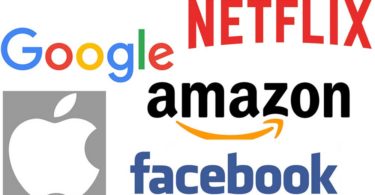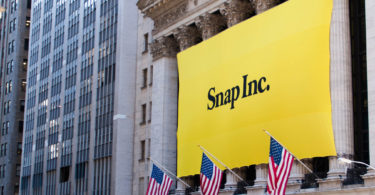This article was originally posted here
The coronavirus has been a disaster for millions of Americans as well as for the U.S. economy, but the shift in daily life from the stay-at-home orders has provided a tailwind for a number of businesses. Those who are fortunate enough not to need their $1,200 stimulus checks to cover immediate expenses have an opportunity to invest those businesses.
E-commerce, for example, has seen a boom with brick-and-mortar stores closed across the country, driving shares of online retail specialists like Amazon, Shopify, and Etsy to all-time highs. Video streaming and videoconferencing have also benefited from the lockdowns; Netflix added a whopping 16 million subscribers in its first quarter, and Zoom Video Communications has seen usage skyrocket during the pandemic.
However, one industry that looks set to make major strides has been somewhat overlooked by investors. Connected TV — television content streamed over the internet — and the advertising ecosystem it enables is ready to take off, and the shutdown orders and economic impact of the outbreak should accelerate that transition. Two companies in particular, The Trade Desk (NASDAQ:TTD) and Roku (NASDAQ:ROKU), are primed to be big winners from connected TV. Let's examine the opportunity in connected TV before exploring how The Trade Desk and Roku can take advantage of it.

The connected TV revolution
Netflix CEO Reed Hastings predicted a few years ago that every year for the next 20 years, Internet TV usage would grow while linear TV would decline. Based on the available evidence, that forecast is coming true. Netflix and video streaming are gaining popularity around the world, taking advantage of viewers' desire to watch what they want when they want to.
For advertisers, connected TV presents a particularly appealing opportunity. Television has long been a preferred medium for advertisers because it's the only one that can deliver long-form video to a captive audience, building brand awareness for driving purchases. But linear television lacks the ability to target individuals the way the internet does. Connected TV, therefore, presents an ideal combination for advertisers, giving them the specific targeting they want with the captive audience that will tolerate long-form video. Connected TV ads generate much greater return on investment for advertisers, and viewers often prefer targeted ads to general ones.
Late last year, eMarketer forecast that connected TV ad spending in the U.S. would grow 28% this year to $8.9 billion and reach $10.8 billion in 2021. However, it makes up less than 4% of total ad spending in the U.S., showing the huge opportunity ahead. The economic impact of the coronavirus is likely to weigh on advertising spending across the board, which might slow that growth in the near term. But the recession and stay-at-home orders should accelerate the transition to connected TV as consumers cut the cable cord to save money and embrace an ever-growing smorgasbord of streaming services. New streaming services like Comcast's Peacock will also expand the market for advertisers.
Why The Trade Desk and Roku are connected TV winners
The Trade Desk runs a cloud-based platform that allows advertisers to manage digital ad campaigns. The company is a pioneer and leader in programmatic advertising, or buying and selling ad inventory electronically.
Last year, its revenue jumped 38.5% to $661.1 million, and unlike many cloud-based companies, The Trade Desk is highly profitable; it boasted a generally accepted accounting principles (GAAP) profit of $108.3 million, or a profit margin of 16.4%. That's evidence that the company provides a valuable and essential tool for its clients, which should prove to be sticky even in a tough economic climate.
In the fourth-quarter earnings call, CEO Jeff Green wasn't shy about talking up the “explosion” in connected TV, or CTV, noting that CTV spending on its platform jumped 137% in 2019. He also said that CTV was the greatest topic of conversation in the marketing section of the massive Consumer Electronics Show in January, with advertisers looking to devote more spending to it and content providers wanting to make more inventory available. In other words, CTV is hitting a tipping point with advertisers, content providers, and consumers all at once. Green said that video will make up half of the $1 trillion global advertising spending, with CTV being the fastest-growing component in video.
While The Trade Desk approaches CTV from the advertisers' side, Roku comes at the opportunity starting with the viewer. The company sells streaming devices, licenses software for streaming TVs, and provides a platform for advertisers to reach audiences.
Roku's revenue jumped 52% last year to $1.13 billion, and platform revenue, of which the biggest component is advertising revenue, climbed 78% to $740.8 million. The platform segment is a high-margin business that had a gross margin of 64.5% last year, and its growth should lead Roku toward overall profitability.
As the leading TV streaming platform in the U.S. by hours streamed, with 40.3 billion last year, Roku has a huge opportunity in connected TV generally. Advertising offers an especially ripe opportunity as advertisers embrace the medium and more streaming services launch.
Roku is also seeing a surge in usage from the stay-at-home orders: The company said that streaming hours jumped 49% in the first quarter to 13.2 billion, and it added 3 million accounts in the period to reach 39.8 million. CEO Anthony Wood acknowledged that the crisis could have an impact on advertisers but expressed long-term optimism, saying, “While we expect some marketers to pause or reduce ad investments in the near term, we believe that the targeted and measurable TV ads and unique sponsorship capabilities that Roku offers are highly beneficial to brands today.”
The shift has already started
With at-home entertainment in high demand during the crisis, brands are already adjusting their marketing budgets to take advantage of the increase in video streaming. Chipotle, for example, has shifted its marketing budget away “from live sports to more online and streaming platforms,” as CEO Brian Niccol said on the recent earnings call. He also added that the company has been pivoting away from traditional television. Starbucks, meanwhile, said it would relaunch its marketing next week as it reopens stores. COO Roz Brewer said, “Coming out of the gate, we're doing a lot of new things with marketing,” including digital media, making it seem likely Starbucks will look to connected TV as one of several channels through which to reach customers.
Though stay-at-home orders around the country are starting to lift, the era of social distancing and other such preventative measures will last for at least a few more months if not into next year, and that means that streaming video consumption will remain elevated. Additionally, the recession might lead Americans to cut back on expenses including cable, choosing instead to watch ad-supported streaming services, which are cheaper than ad-free alternatives. Both factors should help drive long-term growth in connected TV, which was already ramping up before the pandemic, and The Trade Desk and Roku are perfectly poised to capture the opportunity in the industry. Advertising platforms are high-margin business, as the success of Alphabet‘s (NASDAQ:GOOG) (NASDAQ:GOOGL) Google and Facebook have shown, and The Trade Desk and Roku should be able to similarly derive fat profits from CTV.
Both stocks have rocketed higher since their IPOs, generating multibagger returns for early investors. If you're looking a pair of stocks to put your stimulus check to work with, these two won't disappoint.
Editor's Note:
Bonus Pick: Brand New Device Worth $5.7 Billion in Every 5G iPhone
Apple is expected to release its brand-new 5G iPhone on or around September 22.
And this device will be in every single one of them…
You won't find this device in your current phone.
It's absolutely critical to powering 5G speeds in all 100 million 5G iPhones likely to be sold this year.
You could almost consider it a “master key” to 5G access.
And the company behind it could be the number one tech stock of 2020.
Take a look at this urgent video.








